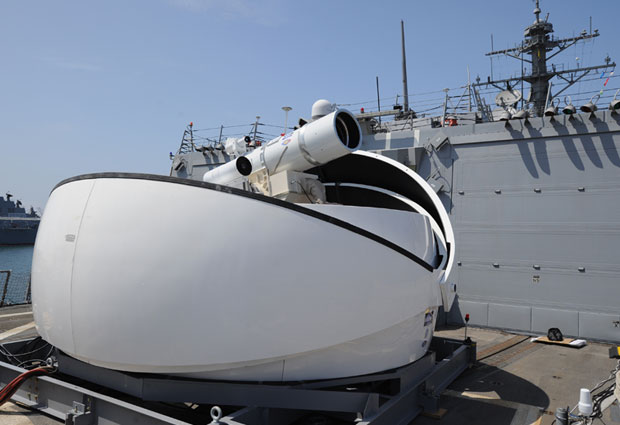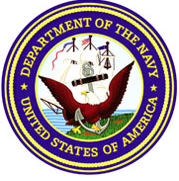#Sometime in fiscal year 2014, a U.S. Navy vessel will be able to add a touch of sci-fi imagination to its already formidable weapons array. A laser weapon will head to the Persian Gulf, and although it's not quite operational, the mere deployment should send a loud message to any troublemakers in the region. Drones have been shot down by prototype lasers, but weather and other conditions have to be optimal.
For the first time, the U.S. Navy plans to deploy a solid-state laser weapon on board one of its vessels, with the laser's debut scheduled for the Persian Gulf during fiscal year 2014. In a press release, the Navy said development and testing have resulted in a weapon that can "perform actions ranging from non-lethal disabling and deterrence all the way up to destruction."

The U.S. Navy's Laser Weapons System (LaWS)
The Ponce is now in the Persian Gulf. It will serve as a testbed platform for the Laser Weapon System (LaWS) when a prototype weapon system is installed on it sometime after October. However, some reports state the LaWS weapon is undergoing field tests on the Ponce.
The Navy did not respond to our request to comment for this story.
Inside the LaWS
The LaWS weapon was temporarily installed in 2012 on the guided-missile destroyer USS Dewey for tests against various targets.
LaWS is built from commercial fiber solid-state lasers strung together, controlled and directed onto targets by an MK 15 Phalanx Close-In Weapon System (CIWS), according to the U.S. Naval Institute.
The Phalanx CIWS was designed and manufactured by defense contractor General Dynamics. It consists of a radar-guided 20mm Gatling gun mounted on a swiveling base, and is used on every class of surface combat ship by the Navy, as well as on some U.S. Coast Guard vessels. Phalanx CIWS units are nicknamed "R2-D2" because of their shape, which resembles the robot character in the Star Wars movies.
The LaWS prototype reportedly cost US$32 million to build, but the Navy claims the weapon is cost-effective because each shot of directed energy costs less than $1, compared to the hundreds of thousands of dollars it costs to fire a missile.

No comments:
Post a Comment